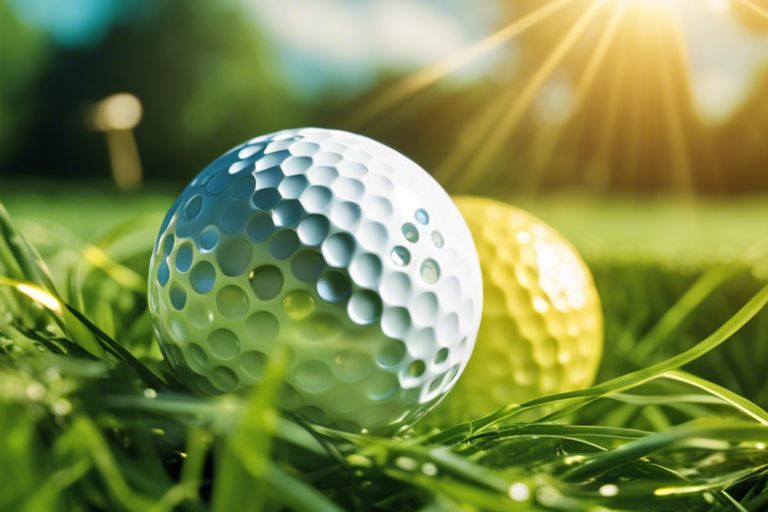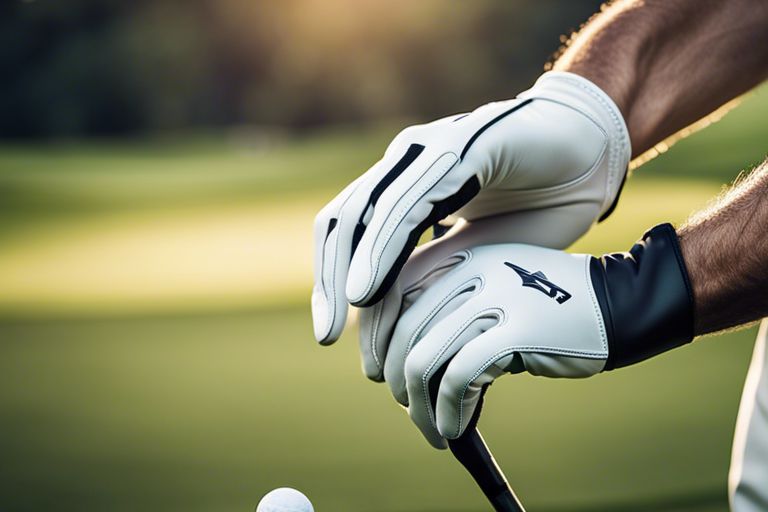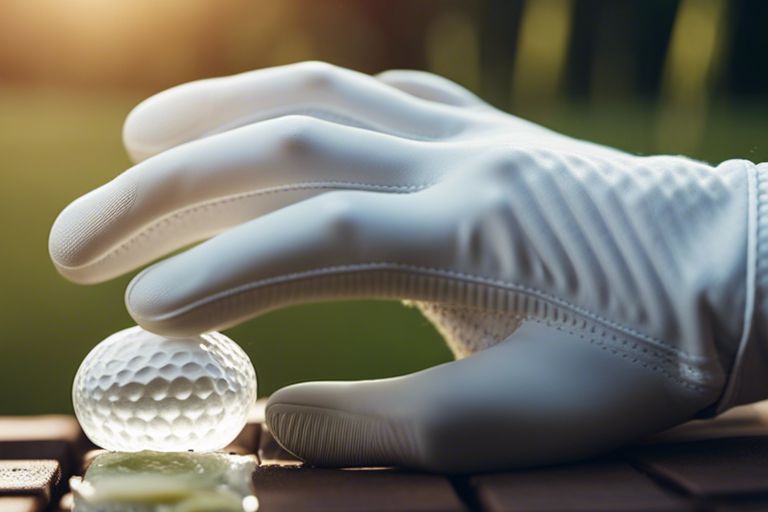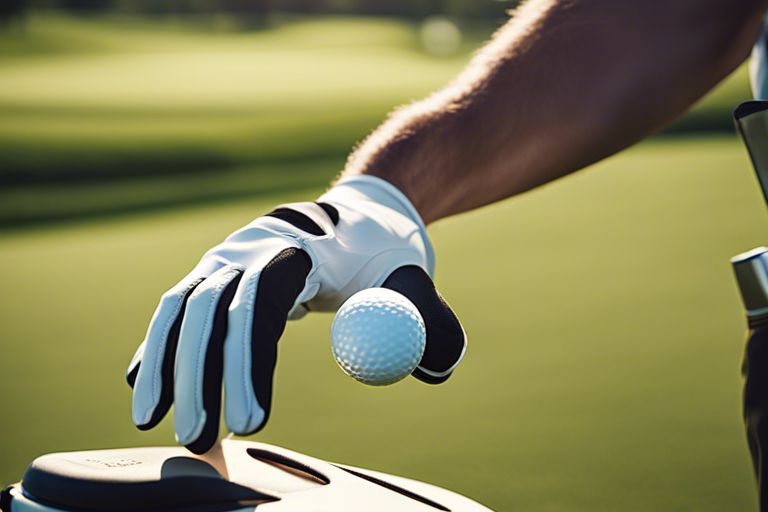Many golfers know that dirty golf balls can significantly impact their performance on the course. In this guide, you will learn effective methods for cleaning your golf balls to maintain their condition and improve your game. By following these simple steps, you can ensure your golf balls are free from dirt, grass stains, and debris, allowing you to play your best game every time you tee off.
Key Takeaways:
- Use warm soapy water: Cleaning golf balls with warm soapy water can help remove dirt and grime effectively.
- Scrub with a brush: Using a brush or scrubbing tool can help to get rid of tough stains on the surface of the golf balls.
- Inspect for damage: It’s important to inspect the golf balls for any damage or cracks before using them to ensure they are safe and suitable for play.

Understanding the Importance of Cleaning Golf Balls
Before venturing into the how-to of cleaning your golf balls, it’s vital to understand why keeping them clean is crucial for your game. Clean golf balls can improve your performance on the course by ensuring that the ball maintains its effectiveness during each shot. Factors affecting golf ball performance can vary, but cleanliness plays a significant role in how well the ball performs.
Factors Affecting Golf Ball Performance
- Surface cleanliness affects the aerodynamics of the ball, impacting its trajectory and distance.
- The weight of dirt and debris can alter the balance of the ball, affecting its spin and roll on the green.
Perceiving how these factors contribute to your golf game can give you a better appreciation for the importance of keeping your golf balls clean.
How Dirt and Debris Impact Your Game
Before you hit the links, it’s important to understand how dirt and debris can impact your game. Debris such as mud, grass, or sand stuck on your golf ball can alter its aerodynamics and trajectory when struck. Dirt on the surface of the ball can affect its spin and overall performance as it flies through the air.
Golf is a game of precision, and even the smallest bit of dirt or debris on your golf ball can make a big difference in your shot accuracy and distance. Keeping your golf balls clean is a simple yet effective way to ensure that you are getting the most out of each swing on the course.
Gathering Essential Cleaning Supplies
Assuming you’re gearing up to clean your golf balls, the first step is to gather all the crucial cleaning supplies. You will need a few key items to effectively clean your golf balls and restore them to their original condition.
Recommended Cleaning Solutions
Now, when it comes to cleaning solutions for your golf balls, there are various options to choose from. You can opt for commercial golf ball cleaners, which are specially formulated for this purpose. Alternatively, you can create your own cleaning solution using a mixture of water and mild soap.
Soft-Bristle Brushes and Microfiber Cloths
Cleaning your golf balls with soft-bristle brushes and microfiber cloths is a gentle yet effective way to remove dirt and grime. The soft bristles help dislodge stubborn debris without scratching the surface of the golf balls, while microfiber cloths are great for drying them off and giving them a final polish.
When using soft-bristle brushes and microfiber cloths, be sure to handle the golf balls with care to avoid any damage. Gently scrub the surface of the golf balls with the brush and wipe them clean with the microfiber cloth for best results.
Water and Mild Soap Alternatives
Solutions deviating slightly from chemicals can also work wonders for your golf balls. You can mix warm water with mild soap to create a gentle cleaning solution that effectively removes dirt and grime from the surface of the golf balls. This method is eco-friendly and safe for both you and the environment.
Another alternative to cleaning solutions is using water alone, which can be surprisingly effective in removing surface dirt from your golf balls. Simply soak the golf balls in warm water for a few minutes, then scrub them with a soft-bristle brush to dislodge any stubborn grime.
Pre-Cleaning Tips and Preparation
Once again, before you start the cleaning process, it’s important to take some pre-cleaning steps to ensure the best results. Here are some tips to help you get your golf balls ready for a thorough cleaning:
- Inspect your golf balls for any visible damage or cracks.
- Remove any loose debris or dirt that may be stuck on the surface.
- Choose the right cleaning method based on the condition of your golf balls.
Inspecting Your Golf Balls for Damage
PreCleaning, check each golf ball for any signs of damage such as cuts, cracks, or deep scratches. Damaged golf balls can affect their performance on the course, so it’s necessary to weed out any problematic ones before cleaning them.
Assume that any golf balls with visible damage should be discarded rather than cleaned and put back into play.
Removing Loose Debris and Dirt
Removing loose debris and dirt from your golf balls is the first step in the cleaning process. This can be done by simply wiping the surface of the balls with a damp cloth or using a soft-bristled brush to scrub off any stubborn dirt.
Damage caused by loose debris and dirt can affect the aerodynamics of your golf balls, leading to inaccurate shots and reduced performance on the course.
Choosing the Right Cleaning Method
Preparation is key when it comes to choosing the right cleaning method for your golf balls. Depending on the level of dirt and debris, you can opt for simple soap and water cleaning, use a specialized golf ball cleaner, or even invest in a golf ball washer for a more thorough cleaning.
Plus, remember to consider the material of your golf balls when choosing a cleaning method to avoid damaging the surface or altering the ball’s performance.

Step-by-Step Cleaning Process
For Soaking and Rinsing Golf Balls, the first step in cleaning your golf balls is to soak them in a mixture of warm water and mild dish soap. This helps to loosen any embedded dirt and grime. You can use a bucket or sink for this process. Once they have soaked for a few minutes, gently scrub each golf ball with a soft brush to remove any remaining residue. After scrubbing, rinse each ball thoroughly with clean water to remove the soap residue.
For Applying Cleaning Solution and Brushing, after soaking and rinsing the golf balls, it’s time to apply a golf ball cleaning solution or a mixture of water and vinegar. This solution will help to further clean and disinfect the balls. Use a soft brush to gently scrub each ball, paying close attention to any stubborn dirt spots. Make sure to cover the entire surface of the ball with the cleaning solution to ensure a thorough cleaning.
Now, Applying Cleaning Solution and Brushing it is crucial to use a brush with soft bristles to avoid damaging the surface of the golf balls. You can also use a toothbrush or a dedicated golf ball cleaning brush for this step. Remember to be gentle yet thorough in your scrubbing to get the best results.
Rinsing and Drying Golf Balls
StepbyStep, Rinsing and Drying Golf Balls after applying the cleaning solution and brushing the golf balls, rinse them thoroughly with clean water to remove any leftover residue. Make sure to rinse each ball individually to ensure that all cleaning solution has been removed. Once rinsed, pat each ball dry with a clean towel or let them air dry completely before using them again.
The Rinsing and Drying Golf Balls drying process is crucial to prevent any water spots or residue from affecting the performance of your golf balls. Ensure that each ball is completely dry before storing them away in your golf bag. By following these simple steps, you can keep your golf balls clean and in top condition for your next game.
Advanced Cleaning Techniques
To ensure your golf balls are sparkling clean and in top condition, consider these advanced cleaning techniques:
-
Using Ultrasonic Cleaners for Deep Cleaning
Cleaning your golf balls using ultrasonic cleaners can provide a deep and thorough cleaning. These devices use high-frequency sound waves to create microscopic bubbles that gently remove dirt, grime, and debris from the surface of the golf ball.
-
Removing Stubborn Stains and Scuffs
Stubborn stains and scuffs on your golf balls can be challenging to remove with regular cleaning methods. In this case, you may need to use specialized cleaning agents or even a gentle abrasive to help lift off the stubborn marks.
Cleaning Using Ultrasonic Cleaners for Deep Cleaning
Ultrasonic cleaners are a great tool for deep cleaning your golf balls. They work by creating high-frequency sound waves that agitate the cleaning solution, removing dirt, grime, and other contaminants from the surface of the balls. Simply place your golf balls in the cleaner with the appropriate solution and let the machine do the work for you.
Removing Stubborn Stains and Scuffs
Stubborn stains and scuffs can detract from the appearance of your golf balls and even affect their performance. If regular cleaning methods are not effective, you can try using a soft sponge or cloth with a mild cleaning solution to gently scrub away the marks. Alternatively, you may consider using a gentle abrasive like baking soda paste to buff out the stubborn stains.
To tackle stubborn stains and scuffs effectively, it’s imperative to be patient and gentle during the cleaning process. Avoid using harsh chemicals or abrasive materials that can damage the surface of the golf balls. With the right techniques and a bit of elbow grease, you can restore your golf balls to their original shine.
Polishing Golf Balls for Maximum Shine
Polishing your golf balls can not only make them look great but also help maintain their condition for longer. There are various techniques you can use to polish your golf balls, such as using a soft cloth with a polishing agent or even a buffing wheel for a more professional finish.
When polishing your golf balls, be sure to use gentle and even pressure to avoid scratching the surface. You can also consider using a specialized golf ball polish that is designed to enhance the shine and appearance of the balls. Regular polishing can keep your golf balls looking like new and ready for your next game on the course.

Factors to Consider for Long-Term Golf Ball Care
Your golf balls require proper care to maintain their performance over time. Here are some factors to consider for long-term golf ball care:
Storage and Handling Best Practices
With proper storage and handling, you can prolong the life of your golf balls. Always store your golf balls in a cool, dry place to prevent moisture and humidity from affecting their performance. Make sure to keep them away from direct sunlight, as exposure to UV rays can degrade the materials of the golf balls over time. Additionally, avoid storing them in extreme temperatures, such as in the trunk of your car or in a hot garage.
Knowing how to handle your golf balls properly can also impact their longevity. Avoid dropping them on hard surfaces or hitting them against sharp objects, as this can cause damage to the outer layer of the ball and affect its performance.
Avoiding Exposure to Extreme Temperatures
Extreme temperatures can have a negative impact on the performance of your golf balls. They can cause the materials to expand or contract, leading to changes in the compression and flight characteristics of the ball. To avoid exposing your golf balls to extreme temperatures, store them in a climate-controlled environment and avoid leaving them in direct sunlight or in hot or cold places for an extended period of time.
| Extreme Temperatures | Effects |
| High temperatures | Can cause the materials to expand, affecting compression and flight characteristics |
| Low temperatures | Can cause the materials to contract, leading to changes in performance |
Regular Maintenance for Optimal Performance
Avoiding neglect of your golf balls and regularly inspecting them for any signs of wear and tear is imperative for optimal performance. Clean your golf balls regularly with warm, soapy water to remove dirt and debris that can impact their performance. Inspect them for cuts, scratches, or other damage, and replace them as needed to ensure consistency in your game.
Performance testing your golf balls periodically can also help you identify any changes in their flight characteristics or compression, allowing you to make adjustments to your game accordingly.
Avoiding Exposure to Extreme Temperatures
Regularly assessing the conditions in which you store and use your golf balls is imperative to prolong their performance and longevity. By following these storage and handling best practices and avoiding exposure to extreme temperatures, you can ensure that your golf balls maintain their optimal performance over time. Recall, proper care and maintenance of your golf balls can make a significant difference in your game on the course.
Conclusion
With this in mind, knowing how to properly clean your golf balls is imperative for maintaining their performance and longevity. By regularly cleaning your golf balls, you can ensure that they maintain their original condition and continue to perform at their best.
Remember to use gentle cleaning methods and avoid harsh chemicals that can damage the ball’s surface. Keep in mind that a clean golf ball not only looks better but also performs better on the course. So, make it a habit to clean your golf balls after each round to keep them in top condition!
FAQ
Q: Why is it important to clean golf balls?
A: Cleaning golf balls is important to maintain their performance on the course. Dirt, grass, and debris can accumulate on the surface of the ball, affecting its trajectory and distance. Keeping your golf balls clean can help ensure consistent performance.
Q: How often should I clean my golf balls?
A: It is recommended to clean your golf balls after every round of golf. This will help prolong the lifespan of the balls and maintain their playability. However, if you notice a significant buildup of dirt or grime during a round, it is also beneficial to clean them mid-game.
Q: What is the best way to clean golf balls?
A: The best way to clean golf balls is to fill a bucket or sink with warm, soapy water. Place the golf balls in the water and use a soft brush or cloth to gently scrub the surface of each ball. Rinse them thoroughly with clean water and allow them to air dry before using them again. Avoid using harsh chemicals or abrasive materials that could damage the surface of the balls.




